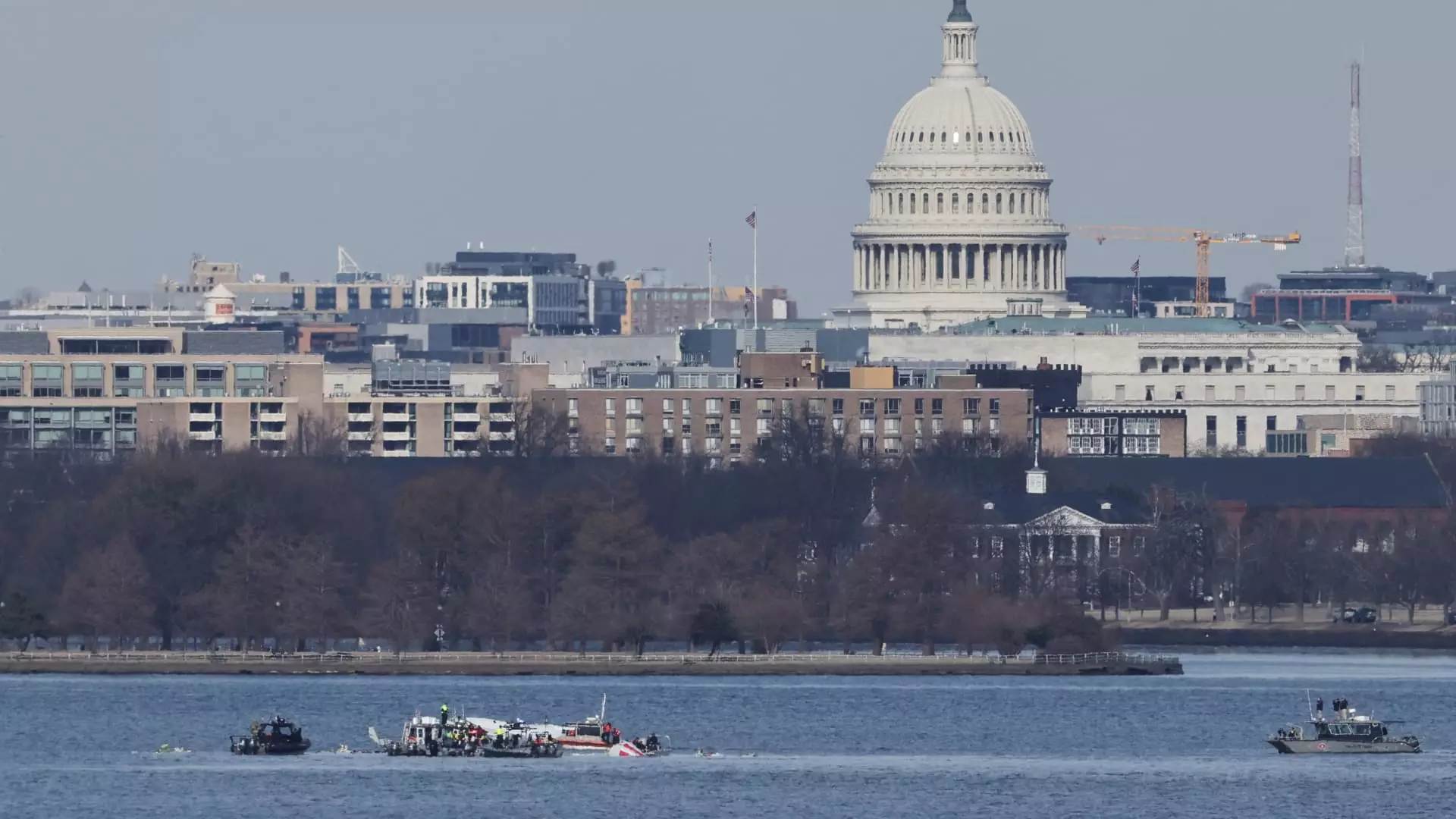The recent air disaster involving a Black Hawk helicopter and an American Airlines jet has sent shockwaves across the nation, reigniting concerns over aviation safety especially in congested airspaces like Washington, D.C. The collision, which resulted in the tragic loss of all 67 lives aboard, marks a significant failure in U.S. air traffic management, raising critical questions about regulation, operational procedures, and the implications of infrastructure bottlenecks.
The collision occurred as American Airlines Flight 5342 was on its final approach to Reagan National Airport around 9 PM. The PSA Airlines Bombardier CRJ-700 was reportedly flying at an altitude of approximately 300 feet, while the Black Hawk was engaged in an annual proficiency training flight. However, controversy surrounds the helicopter’s altitude, with officials confirming that under FAA regulations, it was required to maintain a maximum altitude of 200 feet during operations in the complex flight environment of Washington, D.C.
Witnesses described a fireball illuminating the sky, an alarming sight that foreshadowed the deadly results of this unprecedented incident. As investigators delve into the evidence, it becomes increasingly apparent that an elevation discrepancy was a contributing factor to this catastrophe, a failure that leaves numerous families grieving and numerous questions unanswered.
The National Transportation Safety Board (NTSB) is currently leading the investigation into this disaster, aiming to gather concrete evidence that could explain the circumstances of the collision. The NTSB has already retrieved crucial black boxes from the downed aircraft and is meticulously analyzing them to paint a clearer picture of what transpired during those critical moments leading up to the crash.
Preliminary findings indicate an operational oversight possibly played a role. Reports suggest that the control tower at Reagan National Airport may not have had adequate staffing on that fateful night. This inadequacy may have been exacerbated by the temporary reassignment of controllers, leading to heightened risks in navigating helicopters and commercial air traffic simultaneously. The NTSB Chair has stated the importance of patience in the investigative process, despite the pressure for quick answers in the wake of such a tragedy.
In response to the incident, the FAA has already enacted new flight restrictions for helicopter operations surrounding the Washington, D.C. area, emphasizing this tragedy’s impact on future regulations. The new guidelines aim to streamline helicopter activity and ensure compliance with altitude restrictions to prevent further occurrences.
The crash represents a stark contrast to the air safety track record of the past decade and a half in the United States. The nation had not witnessed a fatal commercial airline accident since 2009, illustrating the effectiveness of stringent safety protocols enacted after earlier disasters. The increase in passenger traffic by over 25% highlights that while flying remains statistically safe, failures in human oversight can have disastrous consequences.
This incident comes at a time when the aviation industry is grappling with various challenges, including acute shortages in air traffic controller staffing, which has led to critical scrutiny of operational readiness in major airports like Reagan National. The accident is stirring up discussions about whether regulatory bodies such as the FAA are doing enough to safeguard the skies, particularly in dense metropolitan areas.
Moreover, the strange public comments from high-ranking officials—asserting that the helicopter was flying too high without waiting for the investigation’s findings—reflect a concerning trend of rushing to conclusions in the midst of tragedies. While transparency is essential, the implications of such statements may provoke unwarranted assumptions about operational negligence without concrete evidence.
As the investigation unfolds, it reveals a portrait of systemic issues that may have led to one of the deadliest air disasters in recent U.S. history. This tragedy serves as a crucial reminder of the need for heightened vigilance regarding aviation safety—particularly in managing the complex airspaces over busy urban centers. The balance of accountability, regulation, and operational efficiency remains a tightrope that authorities must walk, ensuring that lessons learned from this dire incident lead to tangible changes in policy and practice.
In the wake of this catastrophe, it is imperative that regulatory bodies not only address the immediate failures uncovered by the ongoing investigation but also look towards comprehensive reforms that prioritize safety, training, and clear communication paths within the aviation industry. Only through rigorous examination and decisive action can the industry hope to rebuild trust and prevent further tragedies from occurring in the future.

